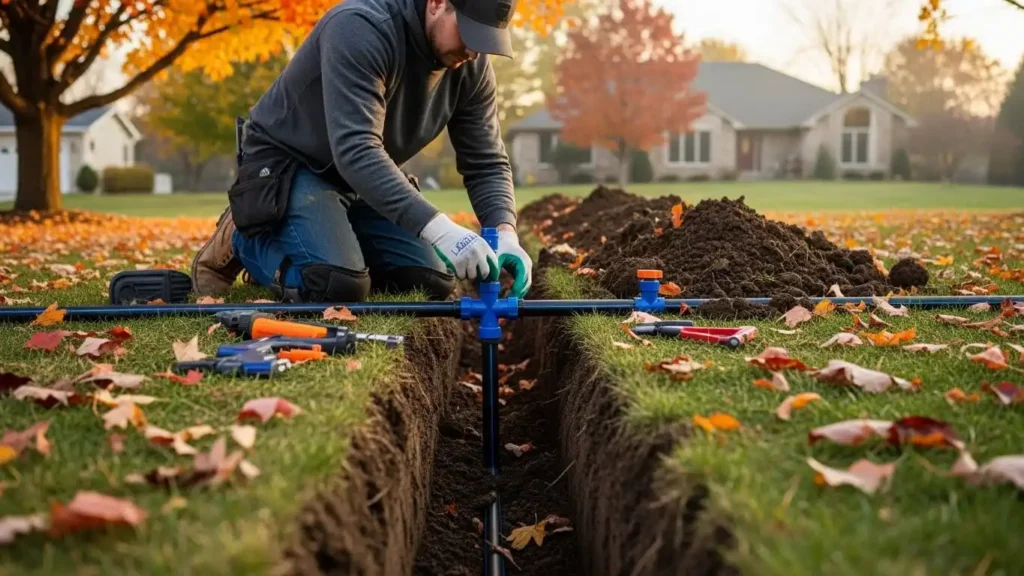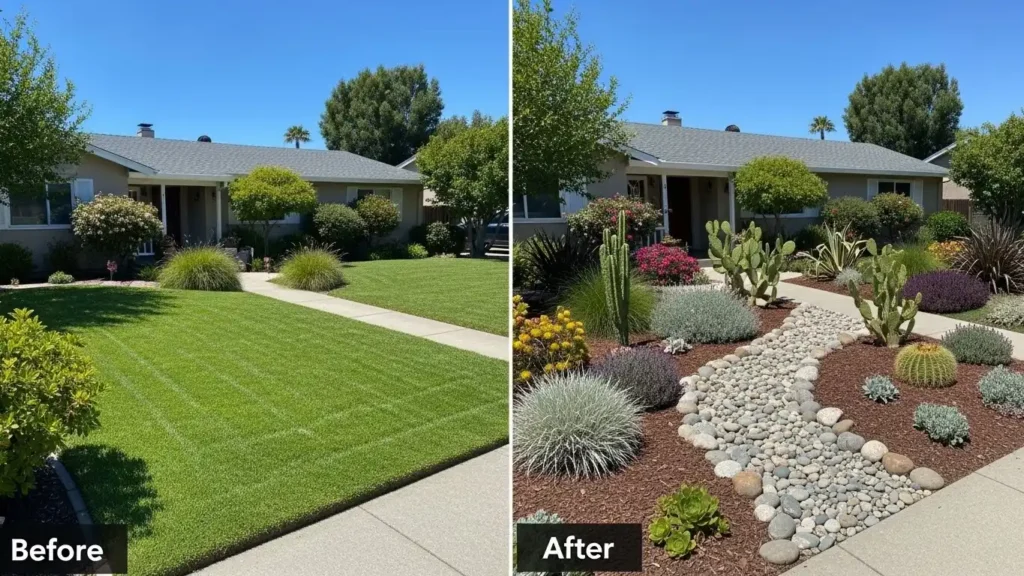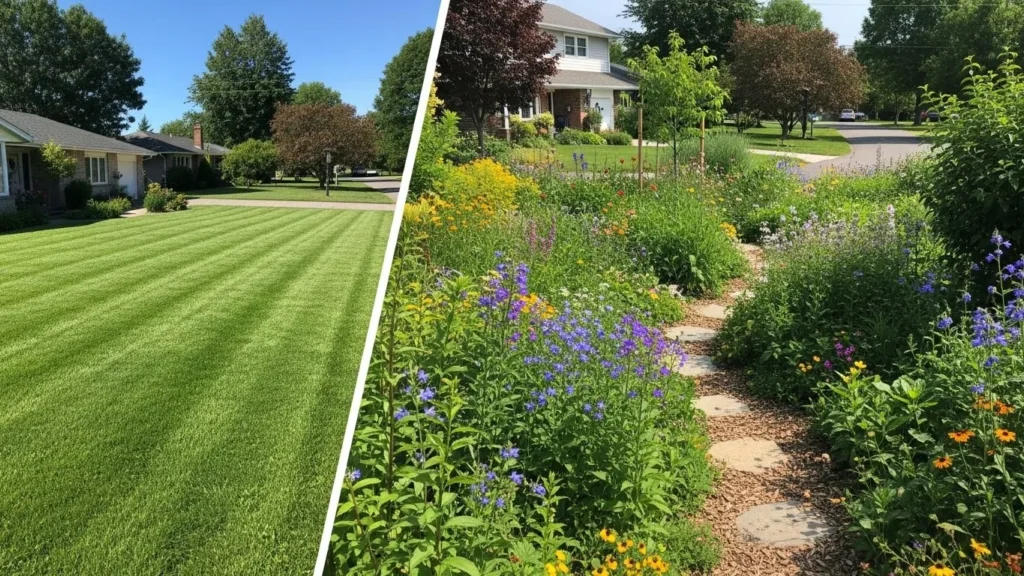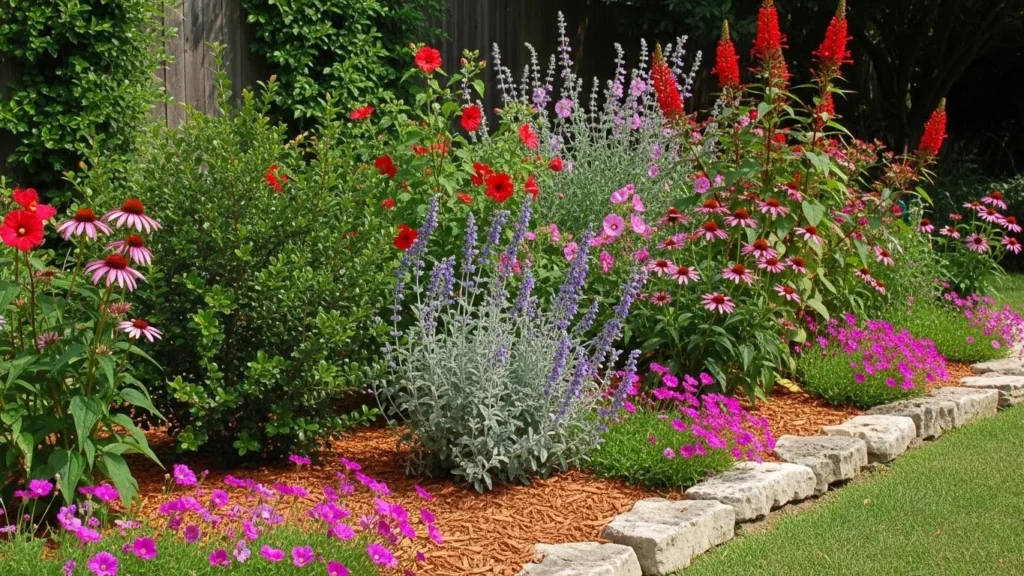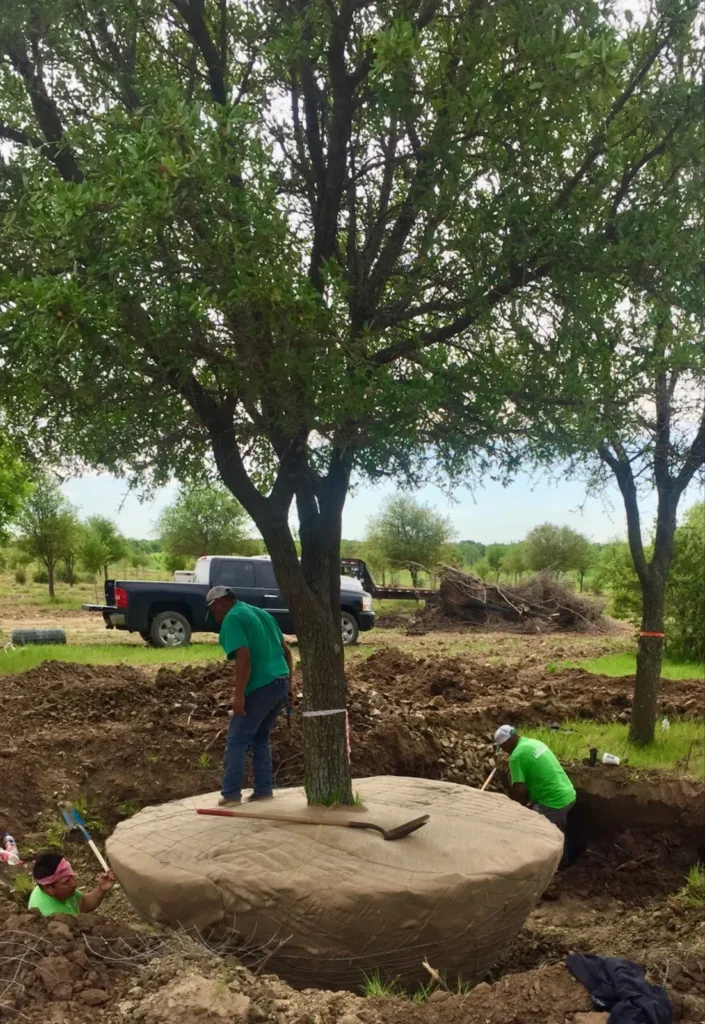Table of Contents
ToggleIntroduction — Why Timing Matters
Timing an irrigation installation is more than a matter of convenience—it affects plant health, construction quality, and long-term system performance. Fall combines a set of environmental and logistical advantages that make it the ideal season for installing or upgrading an irrigation system. Install at the right time and your landscape will be healthier, the system will need less correction, and you’ll avoid the stress of a hot summer installation.
Why Fall Is the Ideal Season for Irrigation Installation
Cooler Air and Less Plant Stress
High summer heat stresses turf and ornamental plants. Digging and trenching near root systems in July or August increases transplant shock. In fall, milder temperatures reduce this stress, making establishment much easier.

Fall installations are gentler on plants and allow systems to settle before spring.
Root Growth Continues After Top Growth Slows
While the visible parts of plants slow down in fall, root systems remain active. Cooler soils and autumn rains stimulate roots to grow deeper and wider—exactly what you want after an installation. Plants that establish roots in fall are better anchored and more drought-resilient the following summer.
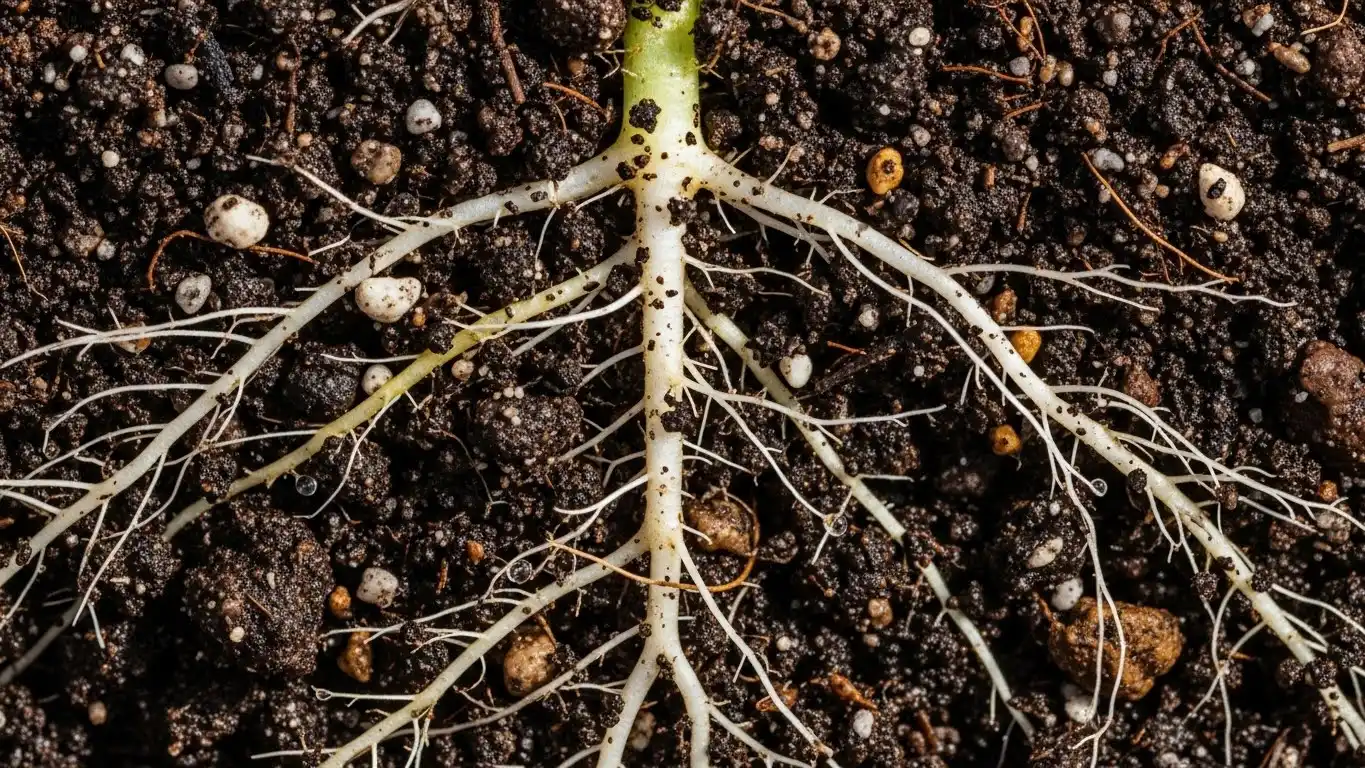
Cooler soils and fall moisture encourage root expansion after installation.
Improved Soil Conditions and Easier Trenching
Fall soils typically have a balanced moisture content—not baked hard like in summer or overly saturated like in spring. This makes trenching cleaner and backfilling more effective, protecting pipes and reducing the risk of future settling.
Better Contractor Availability and Pricing
Many landscaping professionals are less overloaded in the fall compared to the spring and summer rush. This can lead to more flexible scheduling, greater attention to detail, and often better pricing.
Planning a Fall Installation
A successful project starts with a solid plan. Begin with a site survey to map utilities, assess soil, and note microclimates. Then, select the right system for your landscape needs. A hybrid approach often works best: efficient drip irrigation for garden beds and rotors or sprays for turf areas. Proper zoning is key, ensuring that plants with similar water needs are grouped together. For your beds, consider plants from a native plant nursery, as they will pair perfectly with a water-wise irrigation system.
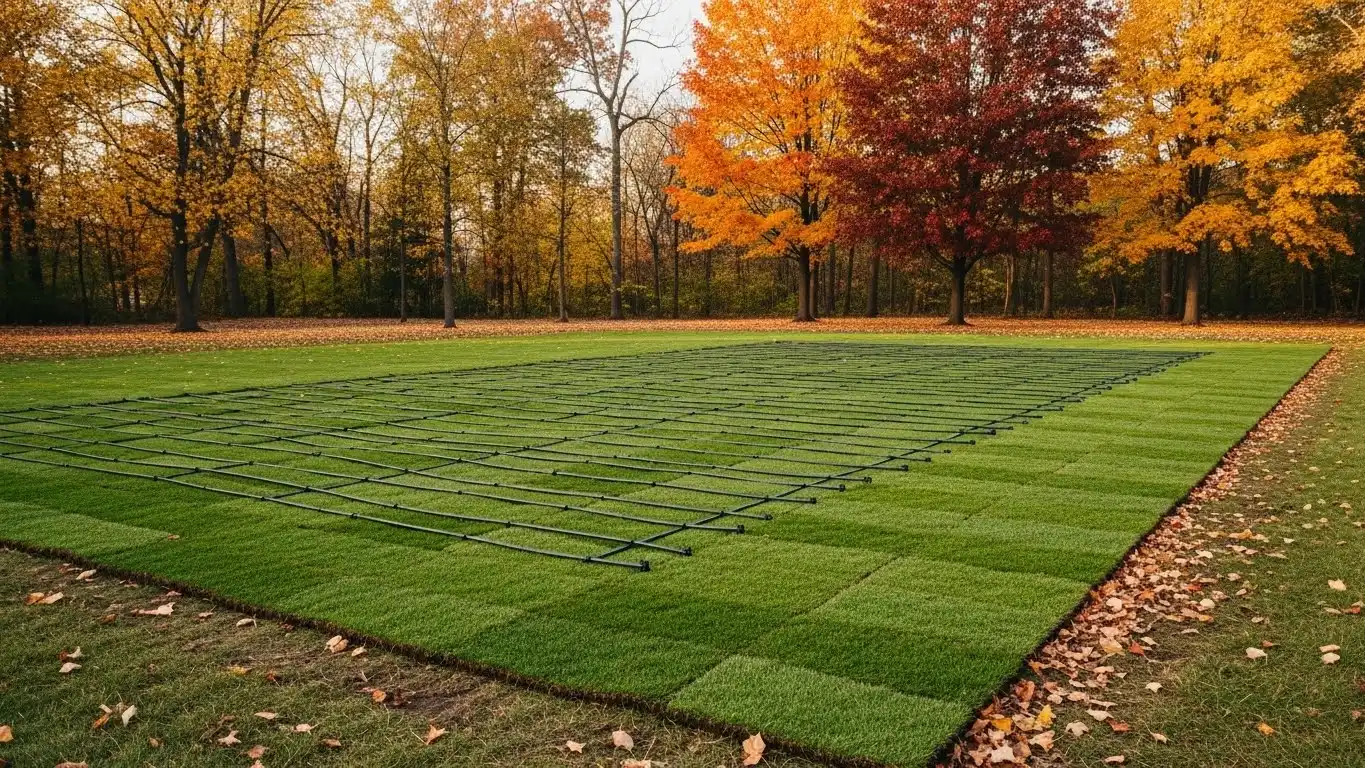
Autumn irrigation helps new turf and plants establish deeper roots.
Winterization and Spring Checkup
A fall installation gives you the luxury of testing the system across rainy and cool cycles. You can tweak head angles, nozzle choices, and run-times, then properly winterize components for freezing conditions. This involves blowing out or draining lines to prevent damage from ice. In the spring, your system will be ready for a simple re-commissioning and final adjustments for the growing season.
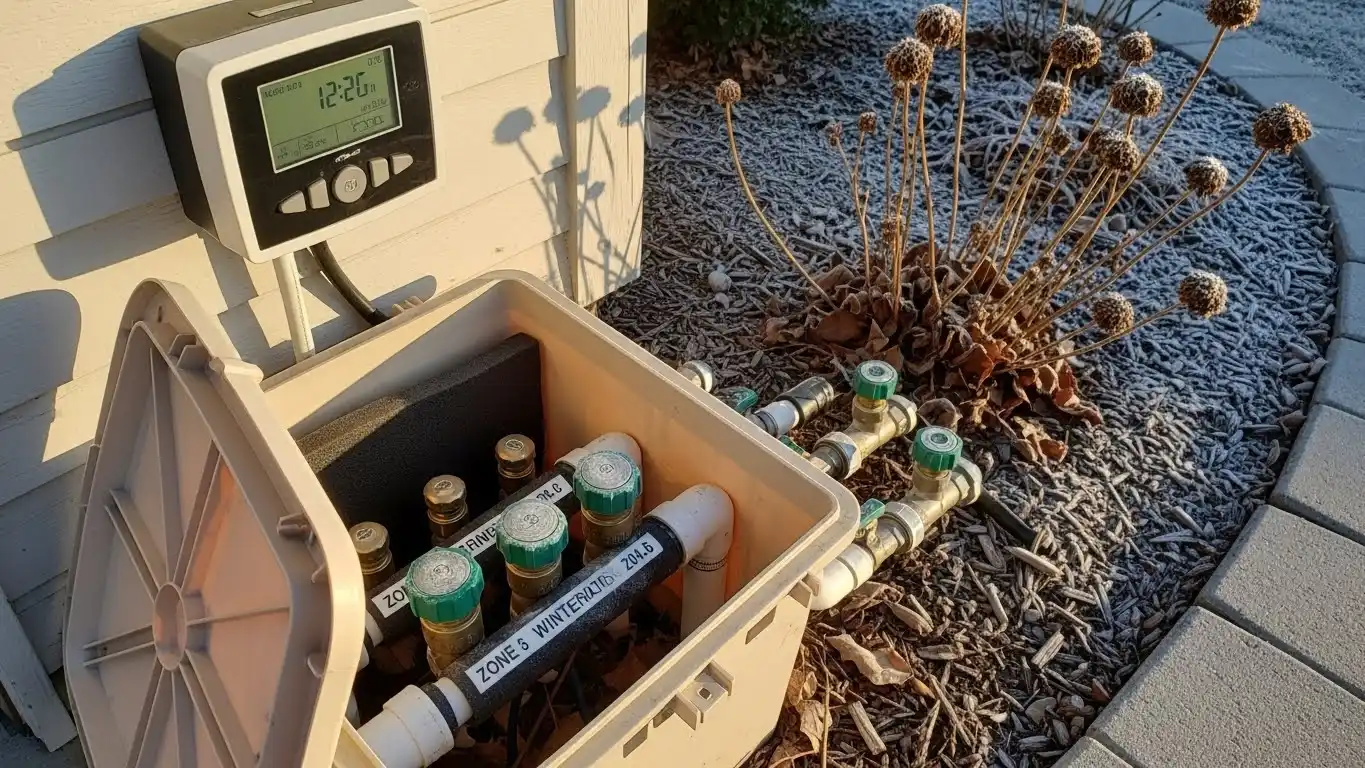
Proper winterization protects system components through freezing weather.
FAQ
Will installing in fall really save water?
Yes. A fall installation allows for better tuning when water demand is low, and the deep root establishment it encourages reduces next summer’s water needs. Combined with drip systems and smart controllers, which are key to modern xeriscape designs, annual water usage typically drops significantly.
Is drip irrigation better for fall plantings?
For beds, trees, and shrubs—absolutely. Drip irrigation provides deep, slow watering that encourages roots to grow downward, improving winter hardiness and spring vigor.
How soon after installation can I plant sod or shrubs?
You can plant immediately. Fall planting combined with a new irrigation system gives plants the best possible start to establish deep roots before winter.
Conclusion & Call to Action
Fall is a smart, practical season to install irrigation. It reduces plant stress, improves installation quality, and gives you time to test and tune the system before spring. Whether you’re installing drip for beds, rotors for turf, or a hybrid system, doing it in autumn is better for your plants, your installer, and your budget.
Written by Let Us Do It Landscaping (LUDI).
Need a fall irrigation assessment, design, or installation? Contact us for a quote!
